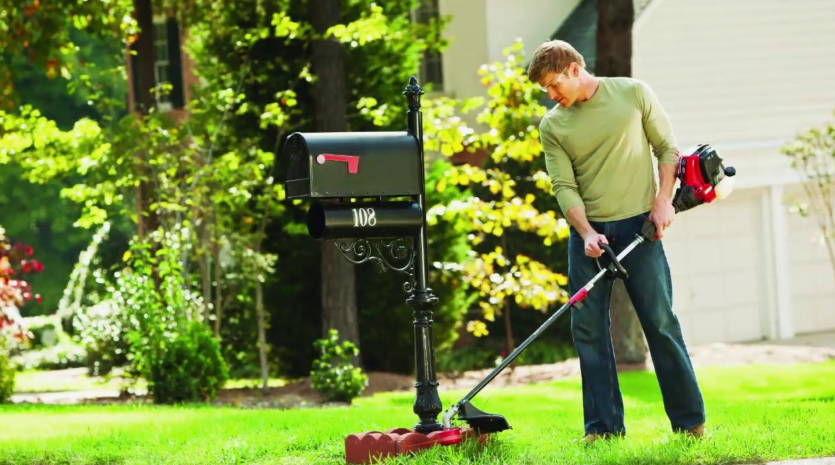A strimmer, also known as a string trimmer, is an essential tool for keeping your garden or lawn looking its best. Proper maintenance is the key to ensuring this valuable piece of equipment stays in excellent working condition for years to come. Neglecting maintenance can lead to costly repairs, reduced efficiency, and even a shorter lifespan.
Here are the Top 10 Strimmer Maintenance Tips to Extend Its Lifespan and keep it in peak performance.
1. Clean Your Strimmer After Each Use
One of the simplest ways to maintain your strimmer is to clean it after every use. Dirt, grass, and debris can accumulate on the cutting head, shaft, and air filters, causing blockages and reducing performance.
How to Clean Your Strimmer:
- Turn off and unplug the tool or remove the spark plug to ensure safety.
- Wipe the exterior with a clean, damp cloth.
- Use a soft brush or compressed air to remove stubborn dirt or debris around the cutting head and ventilation areas.
Regular cleaning not only improves the efficiency of your strimmer but also prevents corrosion.
2. Inspect the Cutting Head Regularly
The cutting head and string line are crucial to your strimmer’s functionality. Check for signs of wear or damage before and after each use. Replace dull or broken components promptly to maintain effective cutting performance.
If your strimmer uses plastic blades, ensure they are sharp and free from cracks. For string-line models, keep an eye out for wear and ensure the spool is wound correctly.
3. Keep the Air Filter Clean
A dirty air filter can reduce your strimmer’s efficiency and put unnecessary strain on the engine. Cleaning or replacing the air filter every few months, or as per the manufacturer’s recommendations, is vital.
Steps to Clean the Air Filter:
- Remove the air filter cover.
- Wash the filter with soapy water if it's reusable. Let it dry completely before reinserting.
- Replace it with a new one if it’s beyond cleaning or severely damaged.
4. Use the Right Fuel Mix
For gas-powered strimmers, using the correct fuel mix is crucial to prevent engine damage. Refer to your strimmer’s user manual for the recommended ratio of oil to gasoline.
Fuel Tips:
- Avoid using old or stale fuel, as it can lead to clogging and engine issues.
- Store fuel in an airtight container to maintain its quality.
- Always mix the fuel in a separate container before adding it to the strimmer.
5. Sharpen or Replace Blades and String Lines
Blunt blades or string lines can make your strimmer less efficient and cause uneven cuts. Inspect the blades regularly, and sharpen or replace them as necessary.
For string lines, always use the recommended thickness and material as specified in the manual. Overly thick or heavy lines can strain the motor, while thinner lines may break frequently.
6. Check the Spark Plug
The spark plug plays a significant role in starting your strimmer’s engine. A worn or fouled spark plug can make starting difficult and reduce performance.
Spark Plug Maintenance:
- Inspect the spark plug every 20–30 hours of use.
- Clean it with a wire brush to remove carbon buildup.
- Replace it if it appears corroded, damaged, or excessively dirty.
7. Lubricate Moving Parts
Proper lubrication prevents wear and tear on your strimmer’s moving parts, especially the shaft and gearbox. Check these components for signs of dryness or rust and apply the recommended lubricant or grease as needed.
Follow the user manual for guidance on which lubricants to use and how frequently to apply them.
8. Store Your Strimmer Properly
Storing your strimmer correctly can significantly extend its lifespan, especially during off-season months.
Storage Tips:
- Drain the fuel tank for gas-powered models to prevent fuel degradation.
- Store the strimmer in a dry, clean place away from moisture or extreme temperatures.
- Hang it on a wall or use a tool stand to keep it off the ground and protect it from accidental damage.
9. Replace Worn Parts Promptly
Don’t delay replacing worn-out parts like belts, spools, or guards. Ignoring these issues can lead to further damage and reduced efficiency.
Keep a list of compatible replacement parts for your strimmer model and purchase them from a reliable source to ensure quality.
10. Follow the Manufacturer’s Maintenance Schedule
Every strimmer model is different, and the manufacturer’s maintenance schedule provides specific instructions to keep yours in top shape. Regular servicing as per these guidelines ensures that potential issues are detected and resolved early.
Routine checkups may include professional inspections, part replacements, and deep cleaning for optimal performance.
FAQs About Strimmer Maintenance
Q1: How often should I clean my strimmer?
You should clean your strimmer after every use to remove dirt and debris. A thorough cleaning once a month is also recommended for long-term care.
Q2: Can I use any type of fuel for my gas-powered strimmer?
No, always use the fuel mix specified in your strimmer’s manual. Using incorrect fuel can damage the engine and void the warranty.
Q3: How do I know when it’s time to replace the string line or blades?
Replace the string line when it starts to fray, becomes too short, or cuts unevenly. For blades, replace them when they are visibly dull, chipped, or no longer cut effectively.
Conclusion
Following these Top 10 Strimmer Maintenance Tips to Extend Its Lifespan will keep your strimmer performing at its best for years to come. Proper care and routine maintenance save money on repairs, ensure safety during use, and deliver superior results every time you tidy up your lawn.
With consistent attention to your strimmer’s needs, you’ll enjoy a reliable and efficient tool that makes gardening and landscaping tasks effortless.





Comments